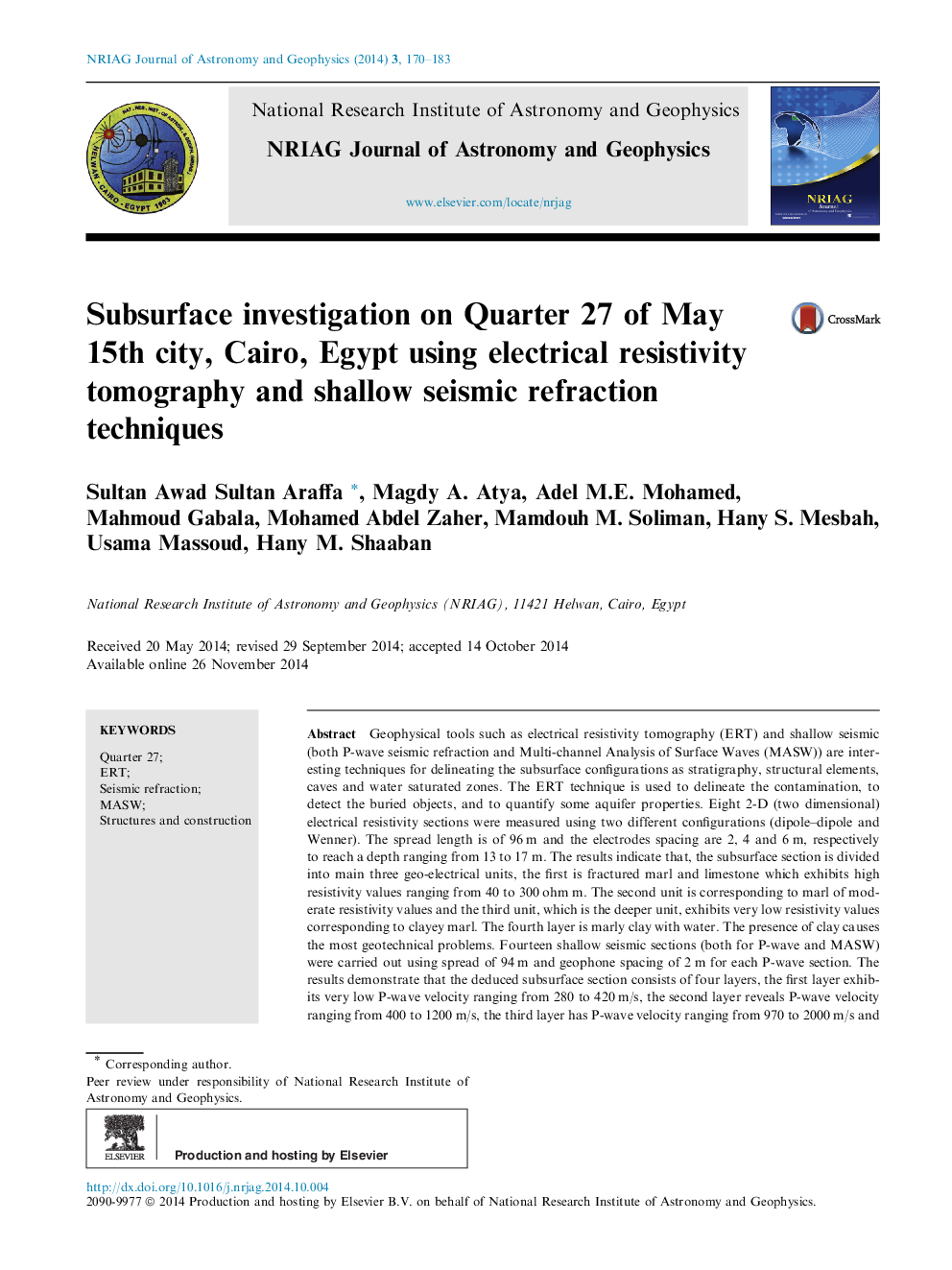| کد مقاله | کد نشریه | سال انتشار | مقاله انگلیسی | نسخه تمام متن |
|---|---|---|---|---|
| 1780616 | 1523838 | 2014 | 14 صفحه PDF | دانلود رایگان |
عنوان انگلیسی مقاله ISI
Subsurface investigation on Quarter 27 of May 15th city, Cairo, Egypt using electrical resistivity tomography and shallow seismic refraction techniques
ترجمه فارسی عنوان
تحقیقات زیرزمینی در چهاردهم شهریور ماه مه 15 قاهره، مصر با استفاده از توموگرافی مقاومت الکتریکی و تکنیک های لرزه ای کم عمق
دانلود مقاله + سفارش ترجمه
دانلود مقاله ISI انگلیسی
رایگان برای ایرانیان
کلمات کلیدی
موضوعات مرتبط
مهندسی و علوم پایه
فیزیک و نجوم
نجوم و فیزیک نجومی
چکیده انگلیسی
Geophysical tools such as electrical resistivity tomography (ERT) and shallow seismic (both P-wave seismic refraction and Multi-channel Analysis of Surface Waves (MASW)) are interesting techniques for delineating the subsurface configurations as stratigraphy, structural elements, caves and water saturated zones. The ERT technique is used to delineate the contamination, to detect the buried objects, and to quantify some aquifer properties. Eight 2-D (two dimensional) electrical resistivity sections were measured using two different configurations (dipole-dipole and Wenner). The spread length is of 96 m and the electrodes spacing are 2, 4 and 6 m, respectively to reach a depth ranging from 13 to 17 m. The results indicate that, the subsurface section is divided into main three geo-electrical units, the first is fractured marl and limestone which exhibits high resistivity values ranging from 40 to 300 ohm m. The second unit is corresponding to marl of moderate resistivity values and the third unit, which is the deeper unit, exhibits very low resistivity values corresponding to clayey marl. The fourth layer is marly clay with water. The presence of clay causes the most geotechnical problems. Fourteen shallow seismic sections (both for P-wave and MASW) were carried out using spread of 94 m and geophone spacing of 2 m for each P-wave section. The results demonstrate that the deduced subsurface section consists of four layers, the first layer exhibits very low P-wave velocity ranging from 280 to 420 m/s, the second layer reveals P-wave velocity ranging from 400 to 1200 m/s, the third layer has P-wave velocity ranging from 970 to 2000 m/s and the fourth layer exhibits high velocity ranging from 1900 to 3600 m/s. The ERT and shallow seismic results, reflect the presence of two parallel faults passing through Quarter 27 and trending NW-SE.
ناشر
Database: Elsevier - ScienceDirect (ساینس دایرکت)
Journal: NRIAG Journal of Astronomy and Geophysics - Volume 3, Issue 2, December 2014, Pages 170-183
Journal: NRIAG Journal of Astronomy and Geophysics - Volume 3, Issue 2, December 2014, Pages 170-183
نویسندگان
Sultan Awad Sultan Araffa, Magdy A. Atya, Adel M.E. Mohamed, Mahmoud Gabala, Mohamed Abdel Zaher, Mamdouh M. Soliman, Hany S. Mesbah, Usama Massoud, Hany M. Shaaban,
